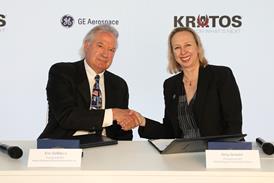Operators at London City Airport had learned - as had the airport owners - that there was a magnetic field anomaly at the holding area for runway 28 that could upset aircraft heading reference systems.
Mostly, operators would find that the problem cleared when they lined up on the runway, but in some cases aircraft compasses continued to give incorrect headings even after take-off.
Here, the UK Air Accidents Investigation Branch, looking for the cause of the magnetic anomalies, becomes an archaeologist: "The airport, opened in 1987, was built on the site of a disused ship loading and unloading dock. Prior to being made into an airport the dock consisted of two rows of warehouses along the northern and southern sides of the dock that were accessed by a central road and railway that ran in an east-west direction down the middle of the dock (now the airport's runway)." Actually the buried railway lines turned out only to be a small part of the magnetic anomaly's cause, but during the search for it the AAIB also discovered that the world has no guidelines for dealing with magnetic anomalies at airports, and practically no empirical research has been done on the subject, so it has made some appropriate recommendations to the International Civil Aviation Organisation.
Accident investigators' jobs can be pretty grim, so once in a while they deserve a little fun.
Source: Flight International























